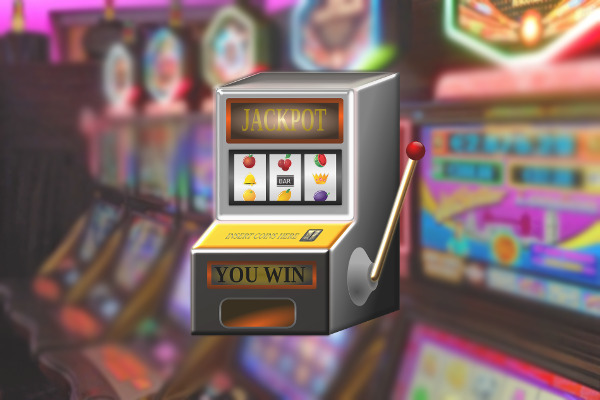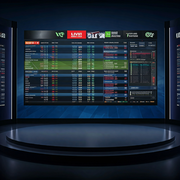How to Manage Your Bankroll Like a Pro Bettor
 Betting isn’t just about picking winners. The sharpest bettors know their real edge comes from how they manage their money. Without bankroll discipline, even the smartest picks can lead to going broke. Learning to treat your bankroll like an investment account is what separates professionals from casual gamblers, and platforms like Sportaza make it easier to put those strategies into practice.
Betting isn’t just about picking winners. The sharpest bettors know their real edge comes from how they manage their money. Without bankroll discipline, even the smartest picks can lead to going broke. Learning to treat your bankroll like an investment account is what separates professionals from casual gamblers, and platforms like Sportaza make it easier to put those strategies into practice.
Here’s how you can manage your bankroll like a pro.
1. Define Your Bankroll
Your bankroll is the total amount of money you’ve set aside exclusively for betting. Think of it as your “business capital.” It should be money you can afford to lose without affecting rent, bills, or daily life.
Pro bettors never dip into personal savings or credit to chase losses. If your bankroll is $1,000, that’s the only money in play. Treat it like a budget: fixed and separate from everything else.
2. Choose the Right Bet Size
Bet sizing is the heart of bankroll management. Professionals rarely wager more than 1–3% of their bankroll on a single bet. For example:
- Bankroll: $1,000
- 1% bet size: $10
- 2% bet size: $20
This protects you from short-term losing streaks. Even if you lose ten bets in a row at 2% each, you’ve only lost 20% of your bankroll—not everything. That keeps you in the game long enough for skill and strategy to matter.
3. Use Units to Stay Consistent
Instead of thinking in dollar amounts, many bettors use “units.” One unit equals your standard bet size, usually 1–2% of your bankroll.
So if your bankroll is $2,500 and you decide 1% is your unit, then one unit equals $25. A two-unit bet would be $50, a half-unit bet would be $12.50, and so on.
This system does two things:
- Keeps your betting consistent and disciplined.
- Let’s you track performance without revealing exact money amounts. (For example, you can say “I’m +12 units this month” instead of “I won $300.”)
4. Scale Up and Down the Right Way
Your bankroll isn’t fixed forever. As it grows, your unit size can grow too if your $1,000 bankroll becomes $1,500, a 1% unit increase from $10 to $15. That way, your bet sizing always matches your current capital.
The same works in reverse. If you hit a downswing and your bankroll decreases, you should adjust your bet size accordingly. Pros call this “scaling down.” It prevents losses from snowballing. Casual bettors often ignore this, keep betting too big, and end up going broke.
5. Keep Records Like a Business
Pro bettors track everything: bets placed, odds, stake, result, profit or loss, and total bankroll. This isn’t just for bookkeeping—it’s how you spot patterns.
You may win more on certain leagues but lose on others. Maybe you’re better with totals than spreads. Without records, you’re guessing. With records, you’re analyzing.
A simple spreadsheet can do the job. Some bettors even use apps to log their bets automatically. The point is to treat it seriously.
6. Accept Variance and Downswings
Even the best bettors in the world lose bets—sometimes lots of them in a row. Professional bankroll management is designed with this in mind.
Variance is the natural up-and-down swing of results. You might lose 10 bets straight, then win the next 12. It’s not always about being wrong—it’s the math of probability.
Pro bettors don’t panic in these stretches. They don’t double their stake to “win it back.” They stick to their unit size and ride it out. Because in the long run, discipline beats emotion.
7. Avoid the Temptation of Chasing
Chasing losses is the single fastest way to destroy a bankroll. You lose a bet, you feel the urge to “get it back” right away, often by betting more than usual or picking low-quality spots.
Pros know that chasing is emotional betting, not smart betting. The rule is simple: every bet must fit your staking plan. If you’re frustrated, step back and take a break instead of forcing action.
8. Shop for the Best Odds
Managing bankroll isn’t just about how much you bet—it’s also about getting the best return on those bets. Professionals always line shop, meaning they check multiple sportsbooks for the best odds.
For example, if one book offers +105 and another offers +110, the second option gives you more value on the same pick. Over hundreds of bets, small differences add up to big money.
It’s like investing: you wouldn’t accept a 3% return if you could safely get 5%. Betting is no different.
9. Set Goals and Limits
Not all bankroll management is about growth. It’s also about limits. Decide in advance:
- What’s your maximum loss in a day or week?
- What’s your long-term growth target?
- At what profit point will you cash out some winnings?
Pros often set strict rules, such as: “If I’m down 5 units in a day, I stop.” This avoids tilt betting and keeps emotions in check.
10. Think Long Term
The biggest difference between casual bettors and professionals is perspective. A casual bettor wants to win tonight. A pro bettor plays for months and years.
Managing your bankroll means embracing the grind. It’s about survival and steady growth, not quick jackpots. By betting small, tracking results, and avoiding emotional decisions, you give yourself the chance to let skill shine over time.
Final Thoughts
Bankroll management isn’t exciting. It won’t give you a story to brag about at the bar. But it’s the only way to stay in the game long enough to win consistently.
The pros know that money management is the foundation of betting success. Without it, even the best picks eventually collapse. With it, even average picks can lead to profit over time.
If you want to bet like a pro, start by respecting your bankroll. Protect it, manage it, and let it work for you. Because in betting, your bankroll isn’t just money—it’s your lifeline.






 Lottery and sports betting platforms are evolving fast in Indonesia. The rise of digital platforms has transformed how enthusiasts engage with games of chance and skill. Among these, the 55five Lottery has gained attention for its promise of high Return to Player (RTP) rates, a feature traditionally associated with casino games but now influencing sports betting trends. High RTP platforms claim to offer better odds, enticing players with the potential for higher returns. This shift is reshaping player behavior, drawing both seasoned bettors and newcomers to explore new ways to wager.
Lottery and sports betting platforms are evolving fast in Indonesia. The rise of digital platforms has transformed how enthusiasts engage with games of chance and skill. Among these, the 55five Lottery has gained attention for its promise of high Return to Player (RTP) rates, a feature traditionally associated with casino games but now influencing sports betting trends. High RTP platforms claim to offer better odds, enticing players with the potential for higher returns. This shift is reshaping player behavior, drawing both seasoned bettors and newcomers to explore new ways to wager.









 Watch live sporting events straight on the site and place in-play bets.
Watch live sporting events straight on the site and place in-play bets. When playing online, security is crucial, especially when dealing with money. With the rise of online gambling, it’s more important than ever to choose safe and secure payment methods. Whether depositing funds or withdrawing your winnings, knowing which options offer the best protection is key to safeguarding your personal data and finances.
When playing online, security is crucial, especially when dealing with money. With the rise of online gambling, it’s more important than ever to choose safe and secure payment methods. Whether depositing funds or withdrawing your winnings, knowing which options offer the best protection is key to safeguarding your personal data and finances.

 The primary objective of Formula One is to test drivers’ maximum lap times. The drivers and automobiles are lightning quick, and they make it look effortless. The attraction of playing casino games is comparable to that of winning a major Formula One race: you get to gamble with real money and have a chance to win large.
The primary objective of Formula One is to test drivers’ maximum lap times. The drivers and automobiles are lightning quick, and they make it look effortless. The attraction of playing casino games is comparable to that of winning a major Formula One race: you get to gamble with real money and have a chance to win large.



 The simple reason why the population of sports bettors in the country has been growing is because many of Turkey’s sports enthusiasts are coming of age. As a matter of fact, the country’s latest football hero, 19-year old Arda Güler recently made a remarkable record as the youngest Turkish player who scored a goal while playing for Spain’s Real Madrid. Güler is also a player for Turkey’s national football team
The simple reason why the population of sports bettors in the country has been growing is because many of Turkey’s sports enthusiasts are coming of age. As a matter of fact, the country’s latest football hero, 19-year old Arda Güler recently made a remarkable record as the youngest Turkish player who scored a goal while playing for Spain’s Real Madrid. Güler is also a player for Turkey’s national football team

 Roulette has enjoyed immense popularity in traditional casinos and has successfully transitioned to the online world like the games played at Casino Days India. This article aims to unravel the fundamental aspects of online roulette, catering to enthusiasts and beginners alike.
Roulette has enjoyed immense popularity in traditional casinos and has successfully transitioned to the online world like the games played at Casino Days India. This article aims to unravel the fundamental aspects of online roulette, catering to enthusiasts and beginners alike.


 South Koreans are generally sports lovers, whilst having a strong gambling culture that largely supports
South Koreans are generally sports lovers, whilst having a strong gambling culture that largely supports  Here, in addition to the legal horse, boat and cycling races, locals can place bets on other favorite Korean sporting events, like baseball, basketball, football, golf and volleyball just to name a few. However, betting style is pari-mutuel, where bettors’ antes are pooled as prize money that will be divided among those who predicted the right winning results. However, the government retains as commissions, a percentage of all the pooled money.
Here, in addition to the legal horse, boat and cycling races, locals can place bets on other favorite Korean sporting events, like baseball, basketball, football, golf and volleyball just to name a few. However, betting style is pari-mutuel, where bettors’ antes are pooled as prize money that will be divided among those who predicted the right winning results. However, the government retains as commissions, a percentage of all the pooled money.






